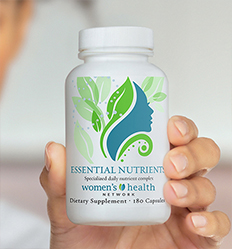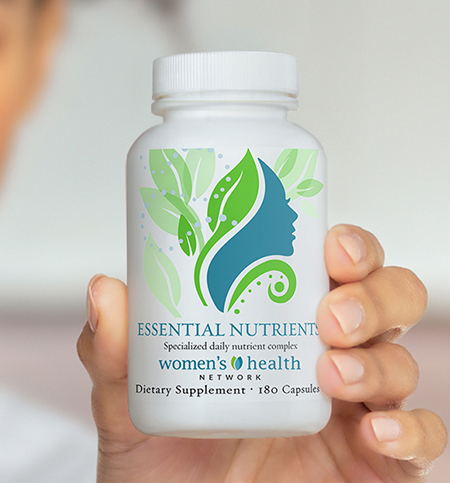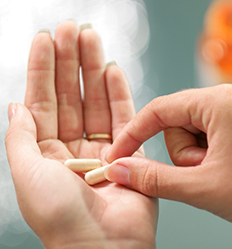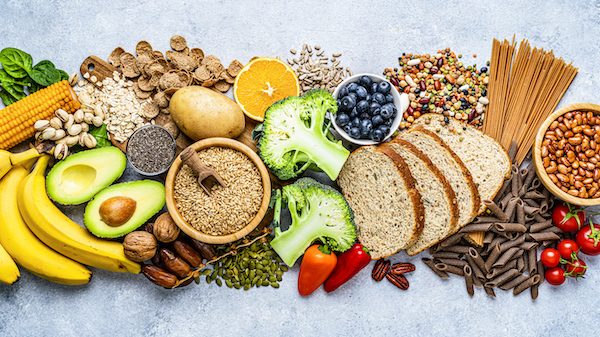You may have heard a lot of conflicting information out there about whether or not you need to take a multivitamin. Some experts say that we can get all the vitamins and minerals we need from eating a healthy diet with plenty of fruits, vegetables, complex carbohydrates, lean protein and healthy fats.
Unfortunately, we know from regular studies conducted by the Department of Agriculture and the Department of Health and Human Services that a vast majority of Americans are falling short of meeting the guidelines for a healthy diet and will not get all the important micronutrients the body needs. The statistics are pretty shocking.
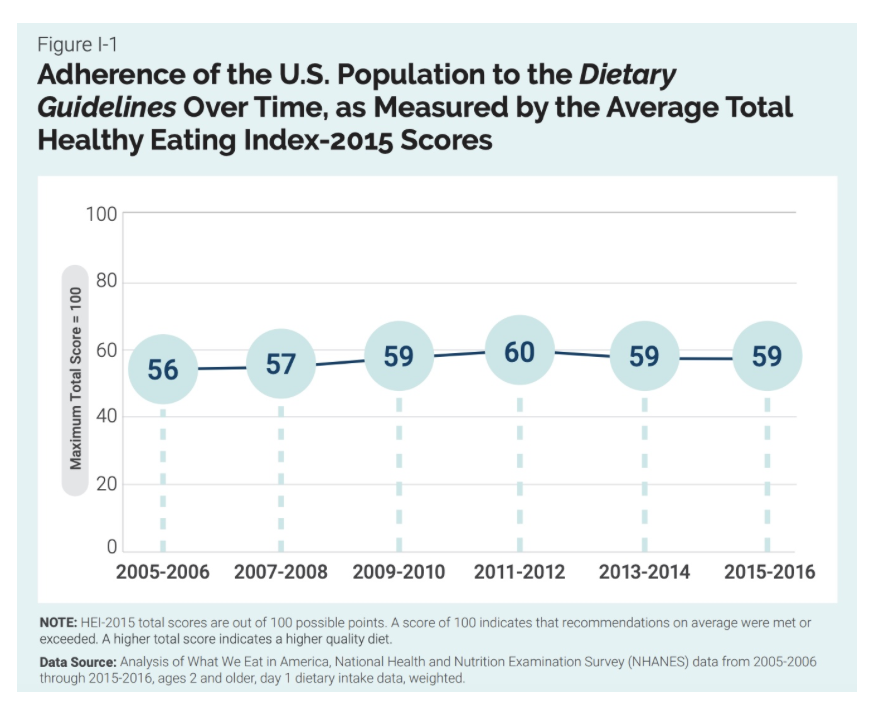
CDC. Dietary Guidelines for Americans. 2020-2025.
Even more shocking to note is that even if you eat a well-balanced diet, you may still not be getting the level of vitamins and minerals people a few generations ago did. That’s because over the past years research has shown there has been a steady decline in the micronutrient levels in common fruits and vegetables.
While experts seem to disagree with what might have caused this decline, studies suggest that a combination of changes we have made to the agricultural processes have contributed to a decline in nutrient density in our food. These changes have been noted not only in the US but in Europe as well.
For example, according to the research, the daily recommended allowance for calcium is 1,000 mg. To get that in 1975 you would have needed to eat 34 ounces of broccoli. Fast forward to 1997, and you would need to eat 3.4 POUNDS of broccoli to get the same amount of calcium. It does not seem likely that many of us are eating more vegetables!
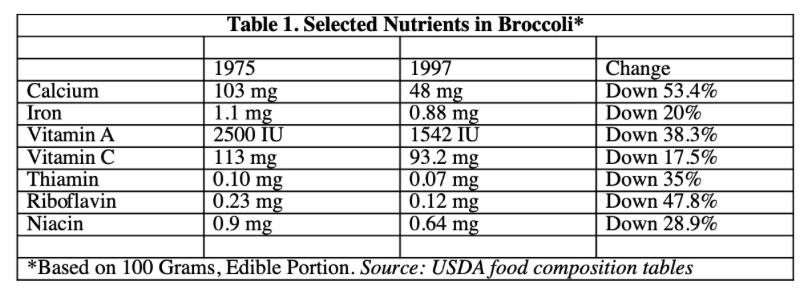
Source: https://s3.wp.wsu.edu
Calcium, potassium, fiber and Vitamin D deficiencies are considered a public health concern for the general US population according to the Dietary Guidelines. Iron, iodine and B12 top the list of common nutrients that are also lacking in our western diet.
Scientists and researchers call this “hidden hunger,” the effect of eating enough calories yet being nutrient deficient. At one time we thought hidden hunger was a term reserved for people in other countries facing food insecurity. Now some studies suggest that it is more common and closer to home than originally thought. As our rate of obesity increases, so does our rate of nutrient deficiency.
For this reason, many of our foods are now fortified or enriched with nutrients to offset these common deficiencies and to replace losses that may occur in food processing. The food industry fortifies many staple products with iodine, Vitamin D and calcium. Breads, cereals and bakery products contain enriched wheat flour fortified with thiamin, niacin, riboflavin, folic acid and iron.
Milk and plant-based milks, many brands of yogurt and eggs, diet and protein bars and drinks may be fortified with high levels of these nutrients. If you’re eating these processed foods, you may be getting more of some nutrients than you realize or intend to.
On the other hand, if you are minimizing or avoiding processed foods to avoid the other health risks that come with eating them, and are instead eating a predominantly whole food diet, bridging the nutrient gap may be all the more important.
How do I know if I need to supplement?
A good place to start is to assess your current diet. We have a tendency to think that we are eating healthier than we actually are. In fact, according to a 2022 study most of us significantly overrate the quality of our diets.
Taking some time to get really honest about what you’re typically eating in a day can teach you a lot. Here is one way to get a clearer picture of the quality of your diet to see if a supplement might be needed to cover the nutrient gaps.
Keep a food diary
Select a few days during the next week to record everything you eat. Most people eat quite differently on work days and weekends. Looking at both will give you good, honest feedback. Think of this as an experiment!
Don’t eat any differently than normal just to “look good” for this experiment. You’re the only one who will see it anyway! You’ll understand yourself and your eating patterns much better if you just get curious and honest.
To keep track, consider using the apps MyFitnessPal or nutritionix, which both provide you with detailed nutritional information on the foods you eat. (Look for the free versions — they have everything you need!) If you don’t want to use an app, you may wish to record everything in a notebook or take pictures with your phone.
At the end of your experiment, look for patterns and trends:
- Are you truly eating the recommended servings of fruits and vegetables each day to get the micronutrients and phytonutrients you need?
- Are you eating enough complex carbohydrates to meet your fiber needs?
- Are you meeting your protein needs to be sure you’re getting the amino acids your body needs for repair and recovery?
If you’re not at least meeting the US Dietary Guidelines you may be, like many Americans, deficient in some key nutrients.
Look for symptoms of nutrient deficiencies
Nutrient deficiencies may be difficult to diagnose and can show up in some really sneaky symptoms including:
- Fatigue
- A reduced ability to fight infections
- Brain fog, inability to focus, irritability, cognitive difficulties
- Increased risk for chronic disease
If you’re experiencing any of the above, shoring up your nutrition and supplementing with a quality multivitamin may be a good first line of defense. Speaking to your physician may be important as well.
Unfortunately, the only way to know your nutrient levels for sure is to conduct micronutrient testing. This is an invasive and expensive test that requires drawing blood and extensive lab work. Though it may not be recommended by your physician or covered by insurance, it is now much more widely available through testing centers which are popping up across the country, and can be a valuable source of information.
How do I pick a quality multivitamin?
If you feel like you need to supplement to bridge the nutrient gap, like most Americans, it’s important to do your homework to find a trustworthy multivitamin supplement.
You might not realize that supplements do not require approval from the FDA. Many do not contain the ingredients listed in the strengths and amounts advertised. Depending on the ingredients used and the manufacturing process involved, some may include ingredients that are not bioavailable to us, meaning that the nutrient is not completely absorbed or able to be used by the body. Some offer wild claims that are not supported by science, and some may even contain harmful ingredients including pesticides, preservatives or heavy metals.
So it’s important to look for supplements that have been independently tested to meet the following standards.
- They contain the ingredients listed in the strengths and amounts declared.
- They are free of harmful ingredients such as heavy metals or pesticides.
- They comply with the FDA good manufacturing process.
- They contain bioavailable nutrients that will break down properly and be absorbed by your body.
A few more points to consider.
- Be wary of companies or products making unethical “too good to be true” claims to diagnose, treat, prevent or cure any disease
- Check the fact label to make sure you don’t have any contraindications or allergies
- Check the expiration date to make sure you’ll be able to consume the product before it expires
- Inform your healthcare provider of any supplements you are taking
- Be aware that some supplements may interact with medications and may not be recommended for pregnant or nursing women
- Though most essential vitamins pose no threat at high doses, the fat-soluble vitamins A, D, E and K can build up to levels that can cause symptoms when taken at high does over long periods of time or if a drug interaction affects how your body uses them
Thankfully, there are trusted sources to be found. Women’s Health Network supplements are manufactured in an NSF and GMP registered facility, and they provide an extra level of protection by testing each production batch to ensure it matches the label specifications. Their supplements are as bioavailable as possible, and are free of toxins, hormone disruptors, artificial preservatives and synthetic dyes.
While we do want you to ensure your supplements meet these standards, we don’t want you to rely on any supplement to take the place of quality nutrition, exercise and stress management. Be sure to bolster your intake of whole healthy foods, get enough movement, and find ways to address the causes and effects of stress on your body.
Explore Women’s Health Network for articles and information from practicing physicians, experts and advocates to support you on your journey to optimal health and well-being.
Sources
Jack, Alex. AMERICA’S VANISHING NUTRIENTS: Decline in Fruit and Vegetable Quality Poses Serious Health and Environmental Risks. 2005.
Davis, D. R. (2009). Declining Fruit and Vegetable Nutrient Composition: What Is the Evidence? HortScience horts, 44(1), 15-19. Retrieved Feb 29, 2024, from https://doi.org/10.21273/HORTSCI.44.1.15







